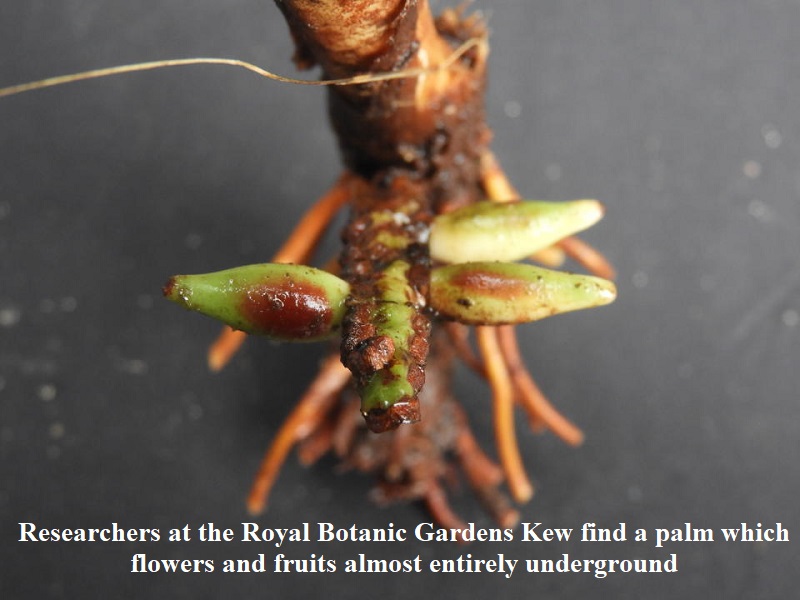
Researchers from the Royal Botanic Gardens (RGB), Kew, and their collaborators have made a remarkable discovery—a unique member of the palm family that flowers and fruits mostly underground. The findings of their study were published in the journal PALMS on Monday. This previously unknown species has been named Pinanga subterranea, derived from the Latin word for ‘underground,’ reflecting its distinct characteristics.
Indigenous to the tropical island of Borneo in Southeast Asia, the plant and its bright-red, sweet, and juicy fruit are familiar to locals, who consume them. Despite the presence of around 300 different palm species on the island, P. subterranea had remained overlooked by scientists. In local Bornean languages, the plant is known by various names, such as Pinang Tanah, Pinang Pipit, Muring Pelandok, and Tudong Pelandok.
This plant can be found in the primary rainforests of western Borneo and scattered across the borders of Malaysia’s Sarawak and Indonesia’s Kalimantan. Surprisingly, it has evaded scientific recognition for years until Dr. Paul Chai, a Malaysian colleague, drew attention to it. Dr. Benedikt Kuhnhäuser, a future leader fellow at RGB, Kew, and part of the research team, expressed that without Dr. Chai’s guidance, they might have mistaken this species for an unremarkable palm seedling and missed its significance.
While most flowering plants have evolved to bloom and bear fruit above ground, aiding pollination and seed dispersal, a small group of plants has developed the ability to carry out these processes underground. P. subterranea joins this subset, along with over 2,500 known palm species and at least 171 species across 89 genera and 33 plant families that engage in underground flowering (geoflory) and fruiting (geocarpy).
The researchers were intrigued by P. subterranea’s dual occurrence of geocarpy and geoflory because the Pinanga genus typically relies on insect pollination, which is more challenging below ground. Despite this, the plant displayed a significant number of seeds and fruit, indicating successful pollination through a mechanism that remains unknown.
Dr. William Baker, senior research leader at Tree of Life at RBG Kew, expressed astonishment at how palms continually surprise researchers. The discovery of P. subterranea raises numerous questions: What pollinates the palm? How do the pollinators locate the underground flowers? How did this phenomenon evolve? And what other surprises do palms hold in store?
It is worth noting that Agusti Randi, an Indonesian researcher from the National University of Singapore and the lead author of the study, encountered a couple of P. subterranea specimens back in 2017. His observations suggested that wild pigs had unearthed some plants, while others were likely consumed or crushed. Randi witnessed the boars digging around the stems, seeking the underground fruit. Their droppings contained seeds from the plant, scattered in the surrounding puddles.

Post Your Comments